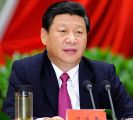FLASHBACK TO 2007: "I am very interested in your approach to mitigate environmental impacts associated with urbanization”, stated Linda Pechacek when she represented the Urban Water Resources Research Council at the British Columbia Water Balance Model Partners Forum

BC’s Inter-Governmental Partnership held a Forum in March 2007 so that Partners could share success stories and lessons learned in implementing green infrastructure. “Once the IGP had invited me to be a member of its Expert Advisory Panel, I decided to attend your Water Balance Model Partners Forum because I am very interested in your approach to mitigate environmental impacts associated with urbanization”, Linda Pechacek informed the Partners.










